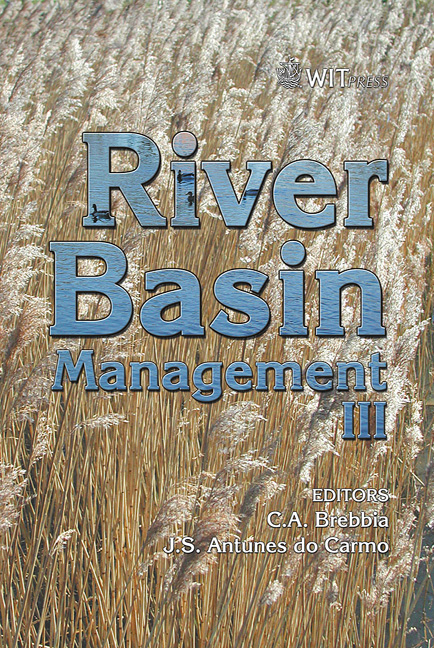Sediment Transport Analysis Using The MORIMOR Model For The Assessment Of Downstream River Effects Due To Flushing In Reservoirs
Price
Free (open access)
Transaction
Volume
83
Pages
10
Published
2005
Size
801 kb
Paper DOI
10.2495/RM050531
Copyright
WIT Press
Author(s)
M. Peviani & J. Alterach
Abstract
This paper describes the basis of a morphodynamic mathematical GIS integrated model (GIS MORIMOR), for non-uniform grain-size sediments which is employed for the computations of sediment transport capacity and bottom changes, at catchment basin scale and for short and long-term events. In the present model the water flow equations are solved together with the sediment equations in a quasi-coupled way, by means of a predictor-corrector numerical approach. Furthermore, a pilot application is described using the model for the simulation of the morphological effects in the Frodolfo River due to upstream reservoir flushing operations, in Valtellina (Italy). Keywords: GIS, numerical modelling, sediment transport, river morphology, hydrodynamic simulation, erosion, deposition, reservoir sediment management. 1 Introduction Alpine reservoirs are major and vital components of water supply, renewable energy generation, recreation and flood protection for mountainous regions as well as downstream piedmont areas. Due to sediment transport processes in the basin, originated in the surface erosion processes and large mass movements (bank erosion, debris flows, etc.), mountainous reservoirs commonly have to deal with a considerable sedimentation. To guarantee the correct operation of the system, the sediment trapped inside the reservoir might be flushed to the downstream rivers. Sediment transport capacity, suspended sediment concentrations and morphological
Keywords
GIS, numerical modelling, sediment transport, river morphology,hydrodynamic simulation, erosion, deposition, reservoir sediment management.





